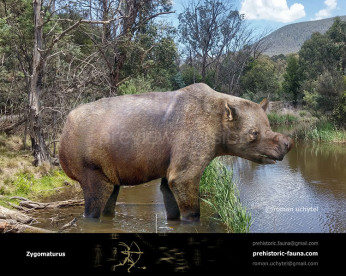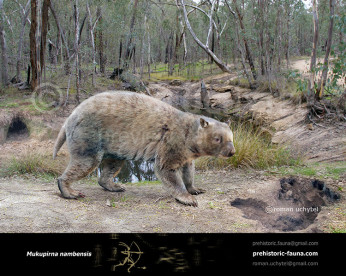Diprotodon
133133Diprotodon (Diprotodon Owen, 1838)
Class: Mammalia
Infraclass: Marsupialia
Order: Diprotodontia
Suborder: Vombatiformes
Family: †Diprotodontidae
Dimensions: length - 3 m, height - 2,1 m, weight - 2700 kg
Temporal range: during the Pleistocene epoch (Australia)
A typical representative: Diprotodon opatum
Diprotodon was a largest known marsupial that lived in Australia during the Pleistocene era, about two million years ago. Diprotodon was a herbivorous giant wombat about the size of an American Bison, it's size was its only defence. Diprotodon herds would forage for roots and leaves in the barren Australian outback, the creature would probably have to eat about a quarter of it's body weight every day to sustain health. Diprotodon became extinct about 50 thousand years ago due to climate change. Australia, which already had a warm climate started to heat up, Diprotodon could not adapt to the harsh heat and started dying off. It's now dwindling poulation was hunted to extinction by predators like Thylacoleo (Thylacoleo carnifex) or Megalania (Megalania prisca), the latter of which soon also became extinct without it's food source.
Diprotodon (Diprotodon Owen, 1838)
Class: Mammalia
Infraclass: Marsupialia
Order: Diprotodontia
Suborder: Vombatiformes
Family: †Diprotodontidae
Dimensions: length - 3 m, height - 2,1 m, weight - 2700 kg
Temporal range: during the Pleistocene epoch (Australia)
A typical representative: Diprotodon opatum
Diprotodon was a largest known marsupial that lived in Australia during the Pleistocene era, about two million years ago. Diprotodon was a herbivorous giant wombat about the size of an American Bison, it's size was its only defence. Diprotodon herds would forage for roots and leaves in the barren Australian outback, the creature would probably have to eat about a quarter of it's body weight every day to sustain health. Diprotodon became extinct about 50 thousand years ago due to climate change. Australia, which already had a warm climate started to heat up, Diprotodon could not adapt to the harsh heat and started dying off. It's now dwindling poulation was hunted to extinction by predators like Thylacoleo (Thylacoleo carnifex) or Megalania (Megalania prisca), the latter of which soon also became extinct without it's food source.

-797x638.jpg)
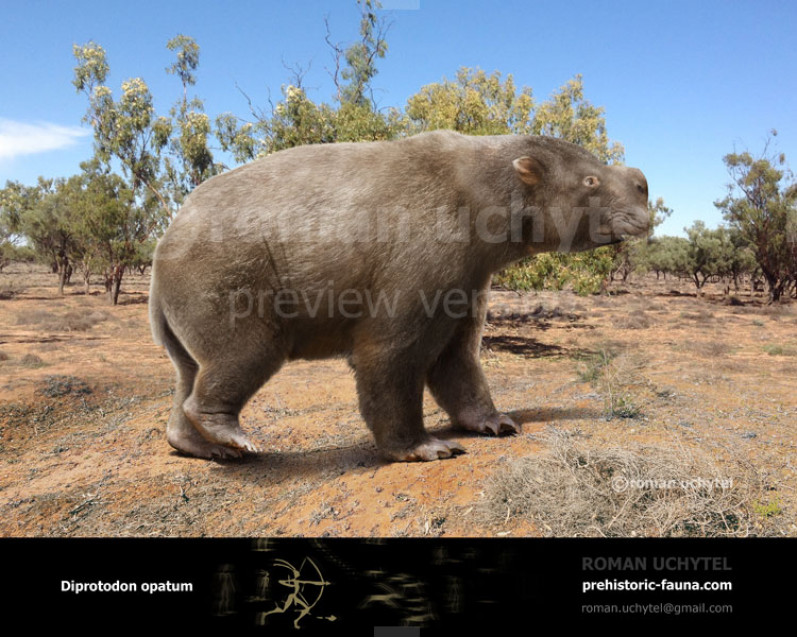
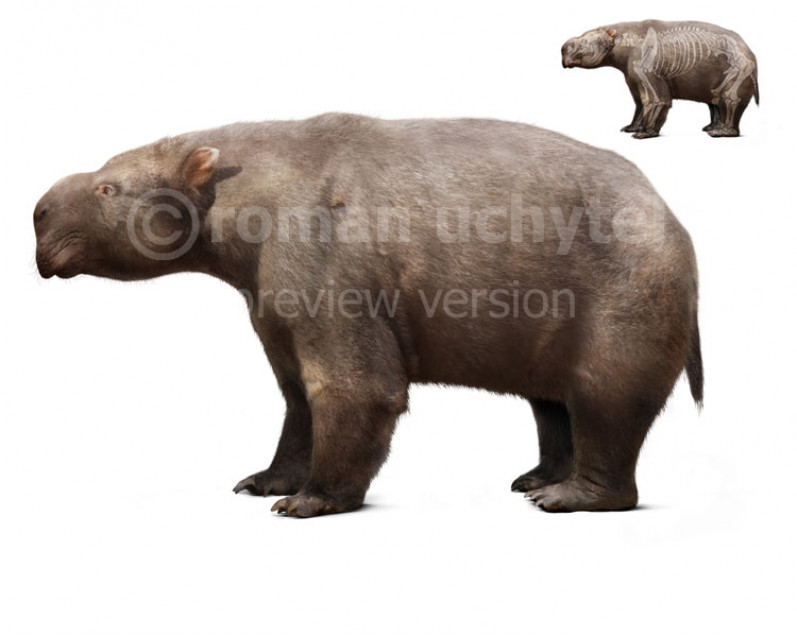
-797x638.jpg)
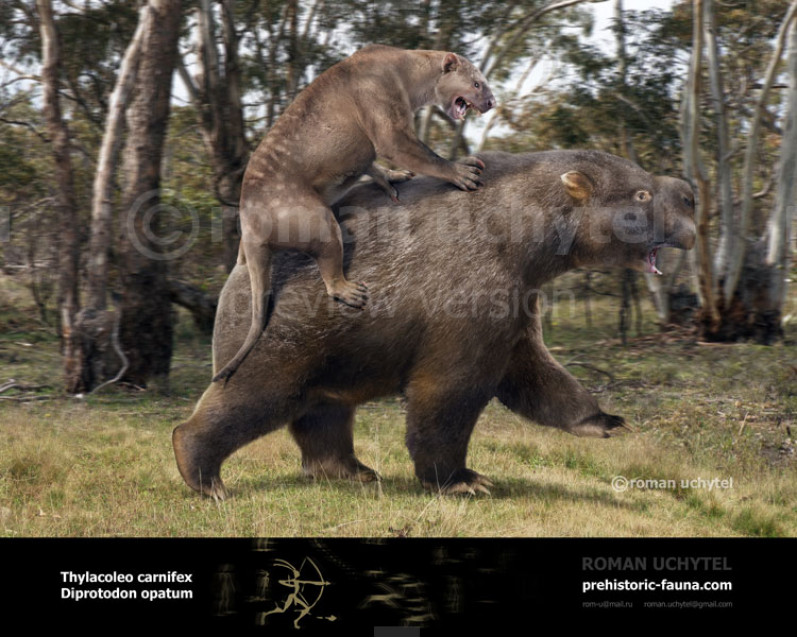
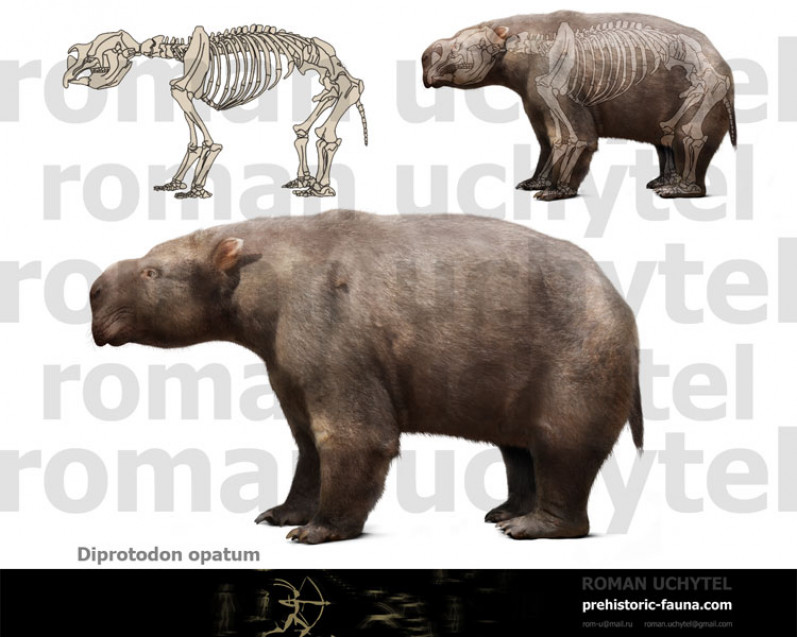
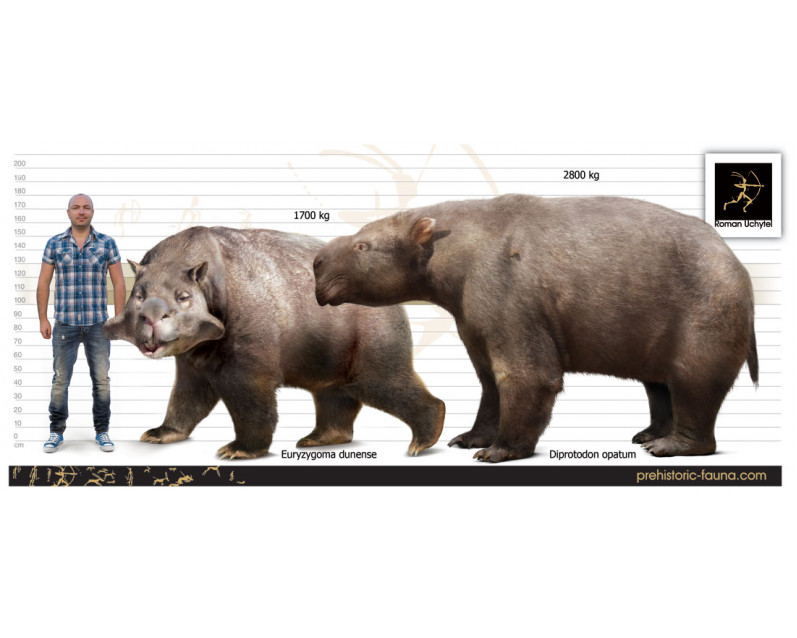
-70x56.jpg)


-70x56.jpg)



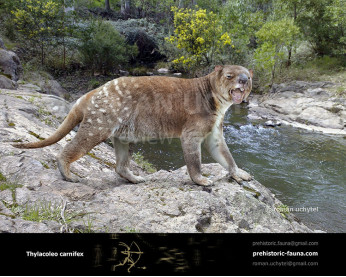
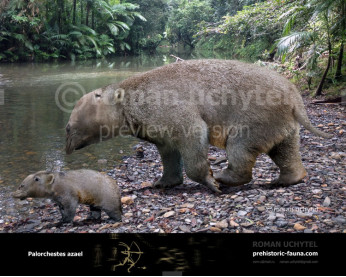
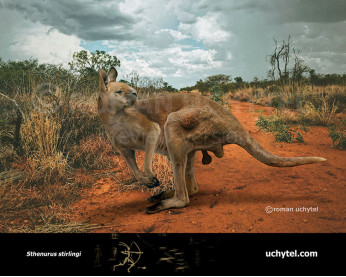
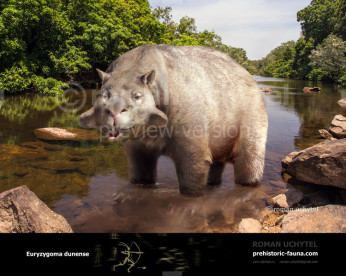
-346x277.jpg)
